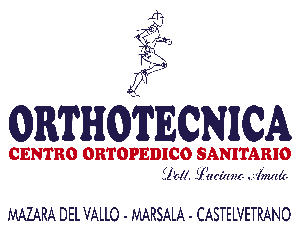It permits development teams to build a highly customized product and incorporate consumer suggestions early on. Each iteration begins by looking forward to potential dangers and determining how finest to keep away from or mitigate them. The subsequent step within the SDLC is to outline the software product requirements. The SRS document created within the earlier stage might be used as a guide for this.
Getting early feedback from an end person allows the elimination of issues and bugs in the early stages of software creation. Similarly, automated and cloud-based platforms, which simulate testing environments, take a significant amount of handbook outing of this stage of the system growth life cycle. Selenium, a browser testing device, is one popular instance of such a platform. If you’re a developer or project supervisor, an understanding of probably the most up-to-date SDLC methodologies is a powerful device. It empowers you to hurry up the event course of, cut prices, leverage the full inventive capability of your staff, and more. Several pitfalls can flip an SDLC implementation into extra of a roadblock to growth than a device that helps us.
The waterfall model is a linear methodology the place each step must be completed before shifting on to the next. All necessities and design choices are discussed first, and then deadlines are set for every stage’s completion. There is no straight reply to this query, as the software program life cycle model you select will depend on the dimensions and scope of the software you’re constructing, on prime of other components. The greatest SDLC methodology will all the time come down to the necessities and project context.
The system development life cycle (SDLC) is a fancy project administration model that encompasses system or software creation from its initial idea to its finalized deployment and maintenance. In this stage, the issue or pain the software targets is clearly defined. First, developers and other staff members define goals for the system and draw a rough plan of how the system will work. Then, they might make use of predictive analysis and AI simulation tools at this stage to test the early-stage validity of an thought. This evaluation helps project managers construct a picture of the long-term sources required to develop a solution, potential market uptake, and which obstacles may arise. The most flexible of the SDLC models, the spiral mannequin is similar to the iterative model in its emphasis on repetition.
A Scrum is a type of implementation of the Agile methodology that helps development groups structure complicated project necessities. To complete assigned duties, Scrum teams work in sprints, which is a interval that lasts between 2 to four weeks. Though the approach may differ between fashions, every methodology has the goal of enabling the development team to ship high-quality software program in a cost-effective and quick manner. Following every phase of a system growth life cycle the staff and project supervisor may establish a baseline or milestones within the course of. The baseline may include begin date, finish date, phase/stage period, and price range knowledge.
The waterfall mannequin supplies self-discipline to project administration and offers a tangible output on the end of every part. However, there could be little room for change once a section is taken into account complete, as changes can affect the software’s delivery time, price, and high quality. Therefore, the mannequin is most fitted for small software program growth tasks, the place duties are straightforward to arrange and manage and necessities may be pre-defined accurately. It is combining components of both design and prototyping-in-stages, in an effort to combine advantages of top-down and bottom-up concepts.
Saas Products: Software-as-a-service Is All Concerning The Product
Training often covers operational coaching for support workers as well as end-user training. The design stage takes as its input the requirements already outlined. It is used within the large functions and methods which built-in small phases or segments. The seventh phases of the Systems Development Life Cycle (SDLC) is often ignored or missed. This phase consists of maintenance and performing common essential updates.
- They did not have a proper idea of what the probabilities would be on the quick term.
- It’s crucial to have a plan for collecting and incorporating stakeholder input into this doc.
- The software that clients use is identified as production, whereas other copies are stated to be within the build environment, or testing setting.
- The advantages of RAD are energetic user involvement, a faster method, and lowered growth cost.
- In short, we wish to verify if the code meets the outlined requirements.
- As part of their embrace of this system, many teams additionally apply an Agile framework often identified as Scrum to assist structure extra complex growth initiatives.
The SDLC course of consists of seven phases, together with planning, design, testing, and maintenance. Every phase may be supplemented by various instruments to support the phase’s main objective. Once you’ve got obtained your design plans in entrance of you, it is time for wireframing and mockups. This step builds upon the planning stage, building out the duties you have to do in the work breakdown schedule. There are plenty of instruments out there, similar to Adobe XD or InVision, that make this process a lot easier than ever before.
Mostly used for creating and delivering a extensive range of concepts, this model completely fits the purchasers who don’t have a transparent concept or vision of what their last product ought to look like. It is necessary that you have contingencies in place when the product is first released to market should any unforeseen issues come up. Microservices structure, for instance, makes it easy to toggle features on and off. A canary release (to a restricted number of users) could additionally be utilized if needed. Prototyping instruments, which now supply in depth automation and AI options, considerably streamline this stage.
Phase 5: Integration & Testing
Even extra necessary is assembling a strong team of expert expertise dedicated to shifting the project ahead via every sudden problem or setback. The Waterfall model is the oldest and some of the traditional software program development lifecycles. However, all life cycle models sometimes include essential actions similar to requirement gathering, design, implementation, testing, and deployment. The Software Development Lifecycle (SDLC) is the method we use to develop software program. If followed appropriately, the software program life cycle phases can provide the best degree of documentation and management management.
Project and program managers sometimes take part in SDLC, along with system and software program engineers, development teams and end-users. DevSecOps is the apply of integrating security testing at every stage of the software improvement process. It consists of instruments and processes that encourage collaboration between developers, safety specialists, and operation groups to build software that can withstand trendy threats. In addition, it ensures that safety assurance actions similar to code evaluate, structure analysis, and penetration testing are integral to growth efforts.
This methodology is known as a waterfall as a outcome of the output from one stage is the enter for the next stage. Once the software program is examined and certified, it’s deployed to users. Once the evaluation is complete, an audit is carried out to evaluate systems lifecycle methodology the product’s viability. The senior management group performs it after getting input from all the key stakeholders and business consultants. For instance, because the system analyst of Viti Bank, you have been tasked to examine the present information system.
Which Sdlc Mannequin Is One Of The Best And Most Commonly Used?
All software program development begins with the same first step; all software program products start as ideas. The idea is turned into a prototype and exists in varied forms earlier than it gets into the user’s palms. Design paperwork usually include practical hierarchy diagrams, display screen layouts, business rules, process diagrams, pseudo-code, and a whole data mannequin with a data dictionary. These components describe the system in adequate element that developers and engineers can develop and deliver the system with minimal additional input. The system specification represents the technical requirements that will provide general steerage for system design.

In this phase, the coding is developed, and the implementation of the design is begun. This works nicely for advanced tasks that have multiple iterations. Bugs and errors could be discovered and fixed as soon https://www.globalcloudteam.com/ as potential with the iterative model, allowing for a faster release to the market. During any stage of the customer lifecycle, multiple activities could also be performed.
The iterative course of suggests that teams start software development with a small subset of requirements. Then, they iteratively improve versions over time until the entire software is ready for production. The group produces a new software model on the end of each iteration.

By including new steps, developers may outline clearer and simpler actions to reach sure targets. Maintenance includes updating an existing software program product to repair bugs and ensure reliability. It also can include including new features or functionality to a present product. Operations check with the day-to-day operating of a software product or service, corresponding to performing backups and other administrative duties. If you’re looking for a reliable software improvement firm to turn your concept right into a top-quality software program product, contact our team right now.
If the software program is in-house, it may mean implementing the change administration process to ensure user training and acceptance. SDLC represents a large number of complicated fashions used in software growth. On a sensible stage, SDLC is a general methodology that covers totally different step-by-step processes wanted to create a high-quality software program product. It then creates the software program through the phases of research, planning, design, growth, testing, and deployment.













































